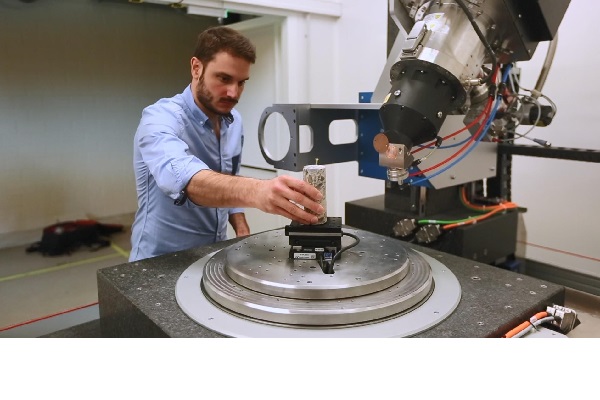Micro computed tomography scanners deliver very high-resolution images of the internal structure of materials. They were designed for engineering research but also have potential applications in the life sciences, archeology and art history. EPFL has now acquired one of its own – the only scanner of this type in Switzerland.
Can you analyze the internal structure of a piece of concrete without damaging it? Yes! With a micro Computed Tomography (CT) scanner. This is a special type of x-ray machine that delivers images with a resolution going down to several microns for small objects. Switzerland now has its first such CT scanner, and it’s at EPFL.
Micro CT scanners are similar to medical CT scanners, but they’re designed to work on materials rather than living organisms. “With a medical scanner, the patient must hold perfectly still, while the micro scanner irradiates the object as it turns,” said Pascal Turberg, a scientist with the Civil Engineering Institute and the Ecological Systems Laboratory. “The machine collects thousands of images of the material and recreates its internal structure in three dimensions, layer by layer, with great precision.”
Seeing how a material deforms
CT scanners provide a remarkably detailed snapshot of a given material’s components, imperfections and overall quality. For example, when a concrete cylinder is scanned, the images include many shades of gray (see video). The black spots correspond to gaps within the material – its natural porosity and any cracks – while the lightest spots show the aggregates and intermediate hues indicate the cement. Nothing is left to the imagination.
The images produced could find applications in many fields. Engineers, for example, could run “coupled experiments” to test how materials perform under stress: they could scan a piece of metal, wood or concrete, deform it in various ways and then scan it again to see how it behaves up to the fracture point. They could even watch how the material deforms in real time. Used in this way, the images could validate the engineers’ theoretical computer models.
Numerous applications
The micro CT scanner acquired by EPFL will not sit idle. ENAC was behind the initiative and hosts the machine, but other schools intend to get in on the action too, including the School of Engineering, and Life Sciences. “The CT scanner can test the quality of materials and electronically check for manufacturing soundness, such as in a welded joint,” said Turberg. “In the field of environmental sciences, the machine could be used to scan things like rocks, plants and river sediment. It could also test the resilience of new composite materials designed for construction work or medical prosthetics.”
Turberg also hopes that EPFL’s new scanner will lead to joint initiatives with outside entities. He says that it could appeal to archeologists, art historians and art restorers: “We’ve already been in contact with a number of individuals who would like to try out the machine. As far as micro CT scanners go, this is the top model in its category. It’s a perfect addition to the other scanners we have access to for our research, including those at the university teaching hospitals and the Paul Scherrer Institute. What’s new and exciting about our scanner is that it delivers very high resolution images and is designed specifically for engineering research.”



















